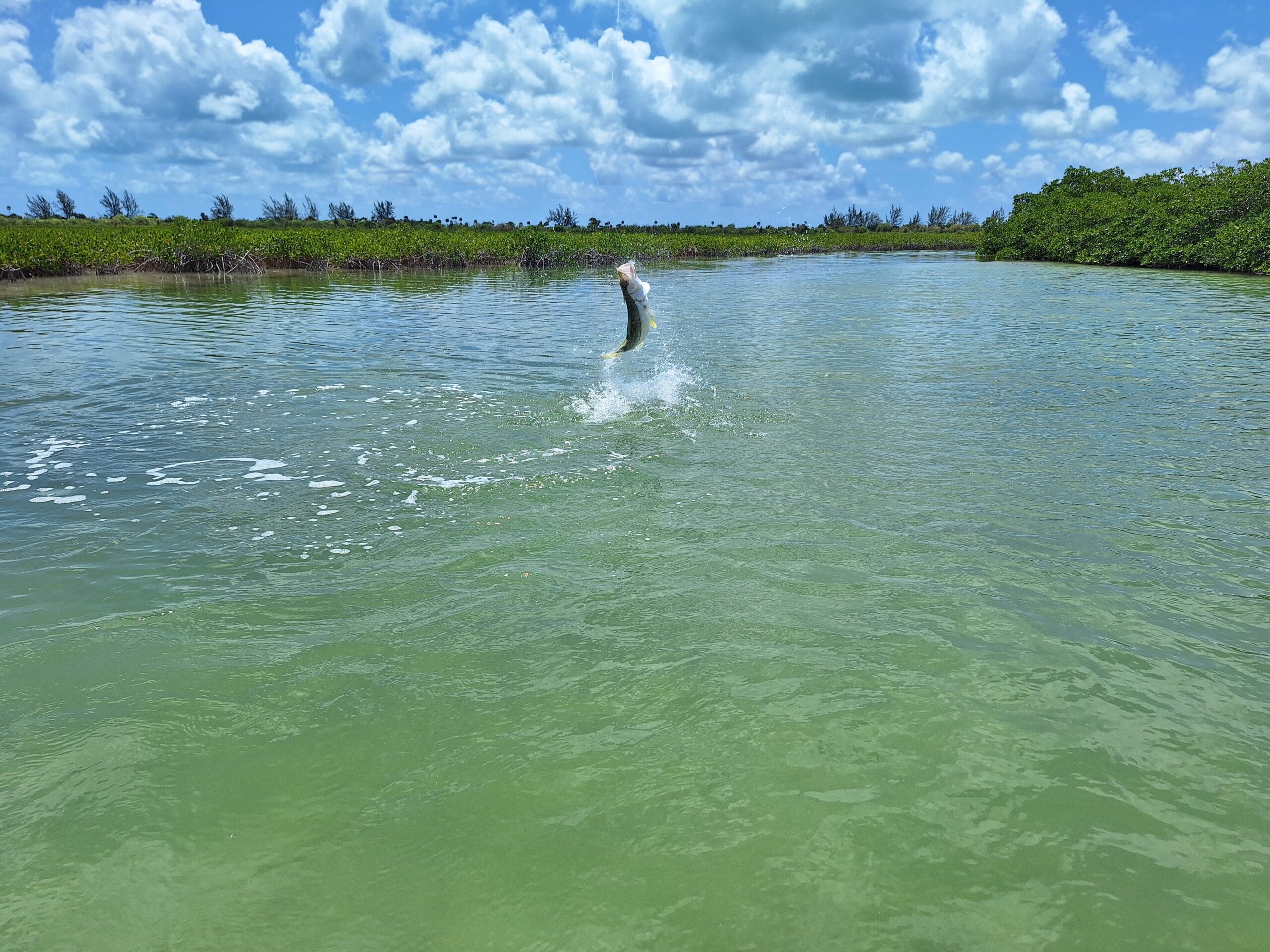A blue-collar angler tangles with permit
A friend describes me as a “blue-collar fisherman.” I love to fly fish, but also love to spin cast, and occasionally baitfish for table fare, usually down the Jersey shore. On the Potomac, I have saturated Clouser minnows in old hummus to go after big blue cats, a terribly invasive species. On my bike ride to work, I once fed carp bread for a week so that my kids could catch one on a bread fly. (Not sporting, I know, but they are also an invasive species.)
I would rather fish the Potomac, the Little Cacapon in West Virginia or the Santa Monica pier with my boys than just about anywhere else in the world. But when one of Trout Unlimited’s most generous supporters, my good friend Tom, invited me to Espiritu Santo Bay (ESB) this year, I had to say yes.
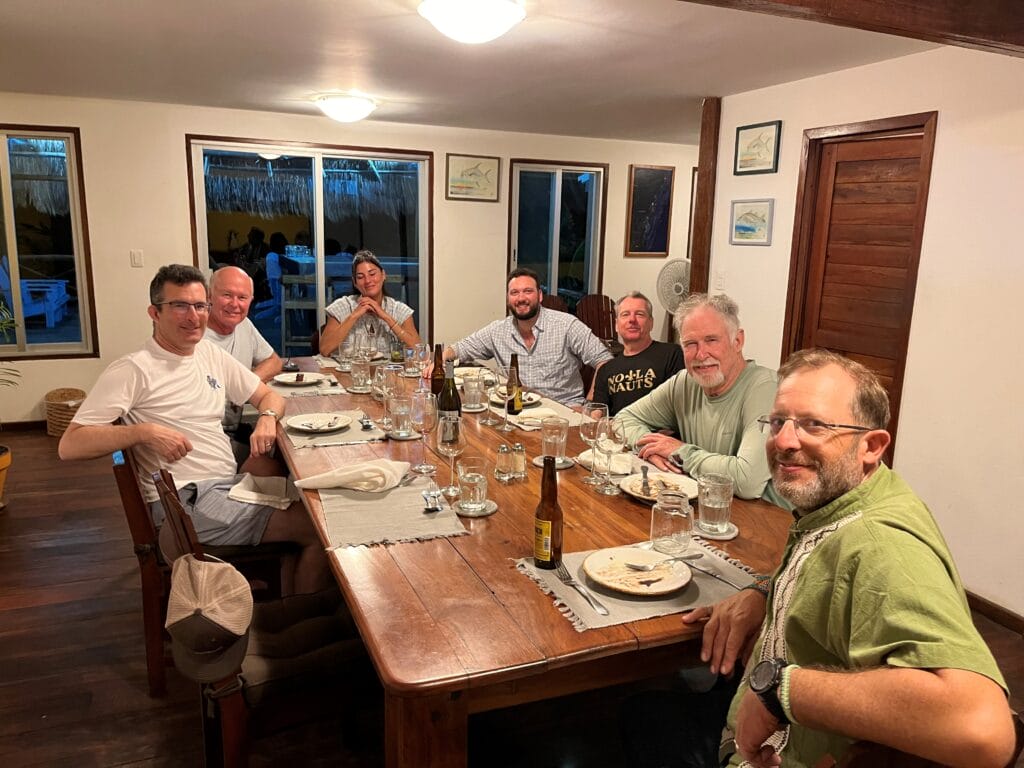
The Places You’ll Go
ESB is on Mexico’s Yucatan Peninsula and in the middle of the 1.3-million-acre Sian Ka’an Biosphere Reserve. The lodge is nothing fancy, but the food is excellent, and the view of the Caribbean is up close and personal.
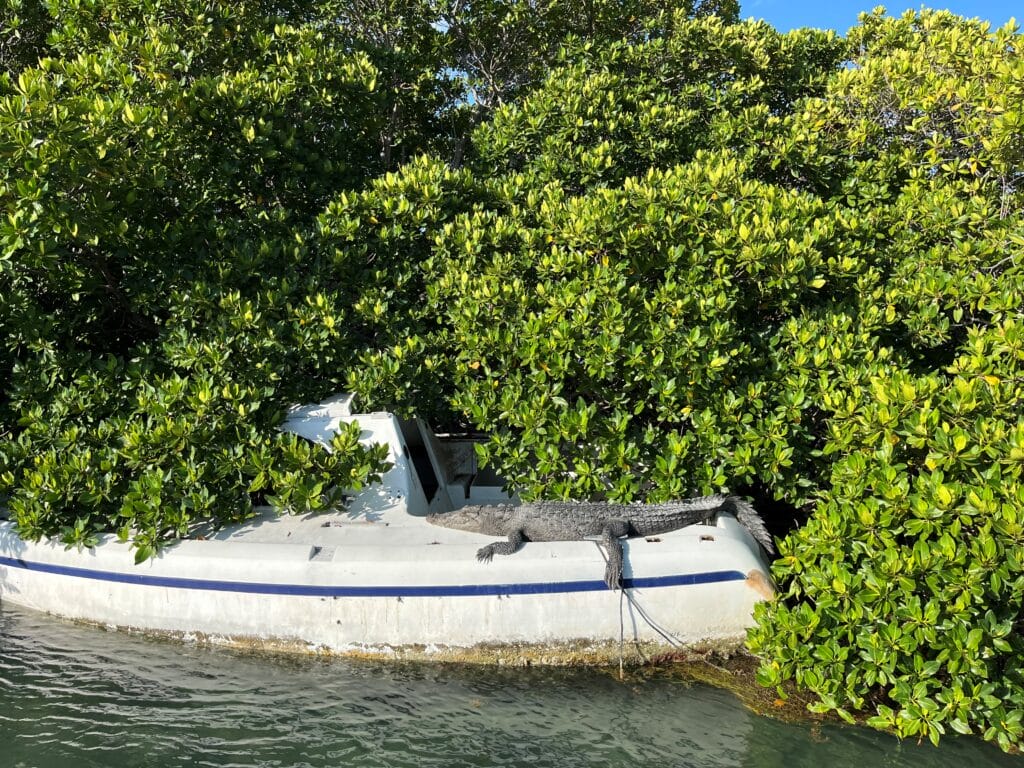
Every morning, we were driven to Punta Herrero, an old lobster village, where we set out for the day. In the bay, we passed an array of small square concrete structures open on one side. I asked the manager of ESB what they were. “Lobster homes,” he answered.
Home is a relative term. The villagers lay these traps in the bay, upside down, and lobsters crawl into their nice secure homes with three walls and a roof. No bait is involved. What the lobsters do not know is that there is a buoy attached to the concrete, and lobstermen will later dive and remove the clawless lobsters. By the end of the trip, I was calling these traps Hotel California: “You can check in anytime you want, but you can never leave.” Last year 34 million pounds of lobster were harvested from the waters of Espiritu Santo Bay.

The daily routine: Wake up. Brush your teeth. Get a cup of OJ or coffee. Apply sunscreen. Take an ibuprofen or two for the partially torn rotator cuff on your casting arm. Clean sunglasses. Then we set off for permit, tarpon, snook, barracuda, and an array of other species.
The Lessons You Learn
One, when fishing for bonefish, make sure your reel has a drag. I brought with me a classic 7/8-weight reel, and only realized after the first bonefish hit that the reel lacked a drag. Rest assured the old school method of “palming the reel” still works, and bonefish were brought to hand, but there is a reason that drag systems were invented for reels—especially in salt water.
Two, when your first tarpon hits your fly, do not trout set. I had never fished for tarpon, permit, snook or barracuda. I was a classic Jersey shore and Cape Cod striper and bluefish guy. On the first morning, Tom drilled into me important lessons. “When the tarpon hits, do not trout set. Strip set, and strip set again. You need to hit them hard. They have thick mouths.”
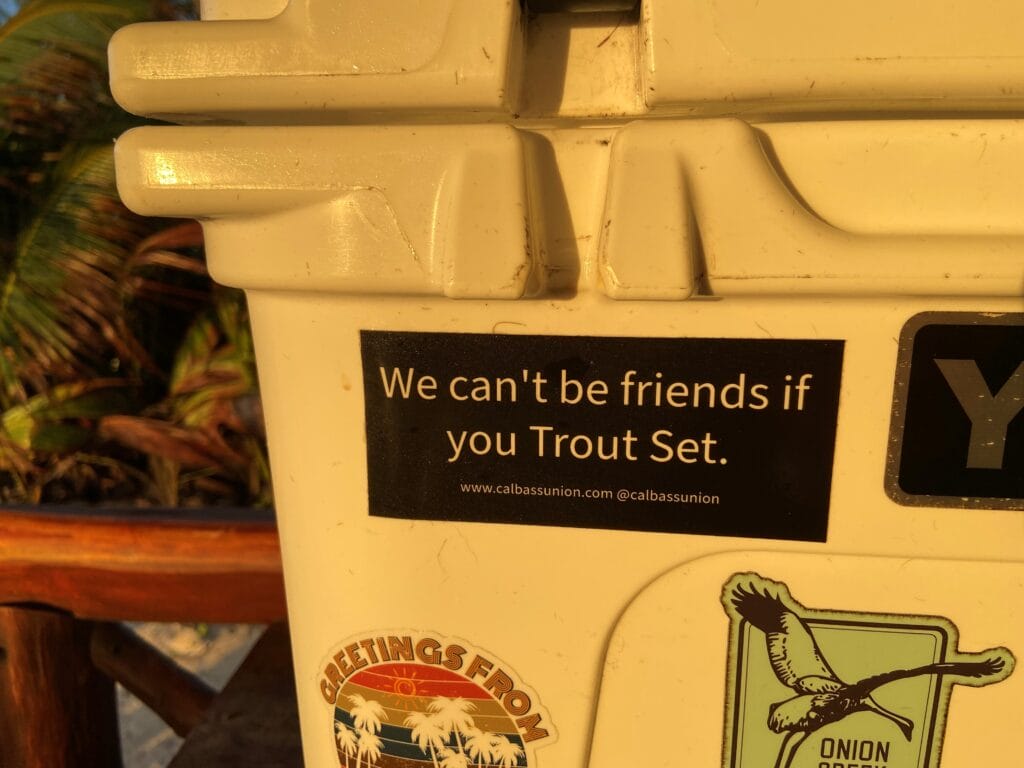
Allegedly, he also said that when the permit hit, “just keep stripping, and then let them run.” Well, I conflated the two lessons, and when the first permit hit, I gave him a humongous tarpon strip set, and looked on in puzzlement when there was no fish at the end of my line.
“You took it away from him,” my guide said, and did not speak to me for the rest of the trip.
Three, release your fish quickly. I was releasing a nice jack and asked Tom to take a photo as I released the fish. Tom looked up and yelled. “Alligator!” I laughed until I looked over my shoulder and saw the gator making his way toward the jack, and more to the point, my hand.
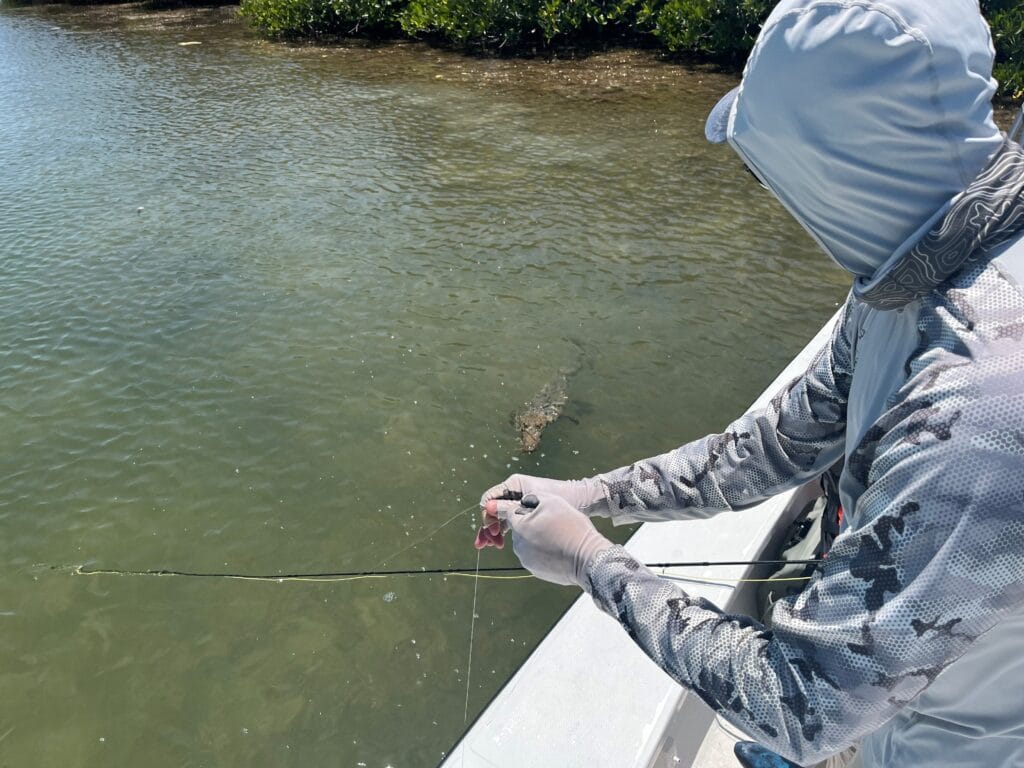
Finally, when you hook your first very large permit, don’t stand on your line. We had one guide who simply refused to give up on permit, he would pole our “Dolphin” boats, essentially a skinny Boston Whaler, hundreds of yards after permit.
Permit are the Holy Grail for many anglers. They will stand on the bow of their boat for hours waiting for a permit fin to emerge or a flash to appear, before making their first cast of the day. I understand this approach but will admit this is not necessarily my kind of fishing. I love sight casting, but also love putting the fly where the fish should be, and occasionally being happily surprised with a strike.
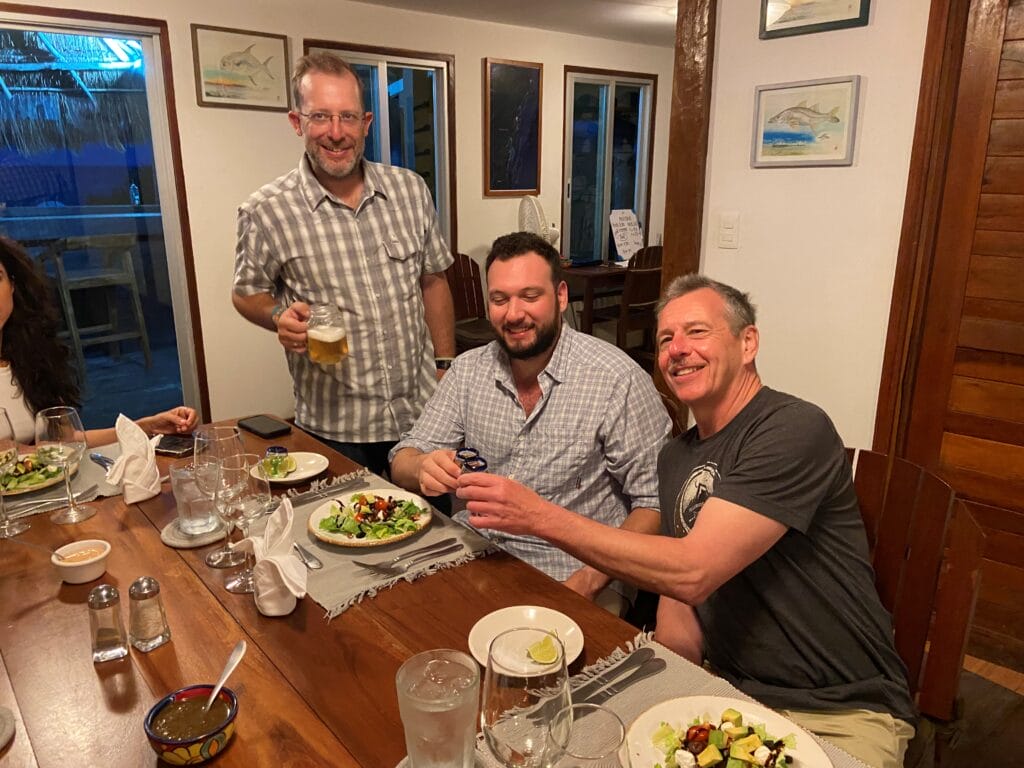
In this case, our guide saw the permit, chased him for several hundred yards, poling the boat through fierce wind, and then put me in a perfect position to cast. I did so several times. “Again, left, 9 o’clock,” he would say. “Strip, strip, strip. Again, moving left to right 11 o’clock. Strip, strip, he is eating, set!” This time I did a strip set, and the permit was hooked.
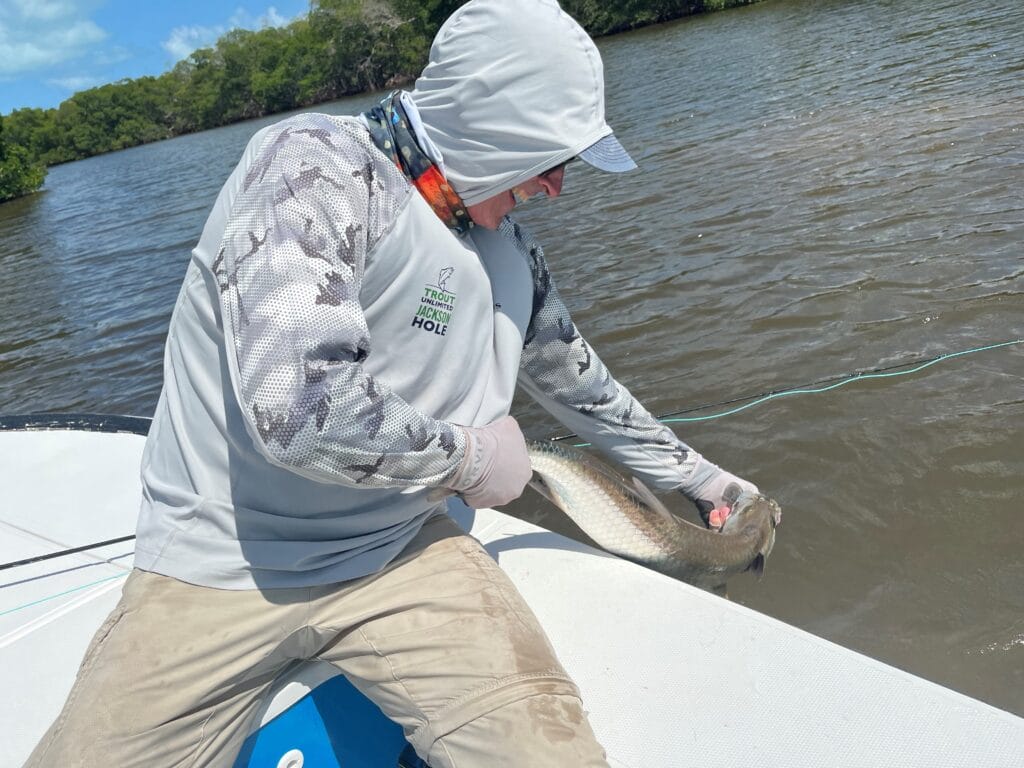
“Let him run!” was the last thing I heard from the guide before the fish ran. I raised my left arm to hold the loose line so it did not wrap around my reel. Then, it happened. I felt a jerk, and my line went slack. I looked down to see I was standing on the line.
Sometimes, it is a good thing that the guides in Mexico wear hats, sunglasses and buffs that cover their faces.
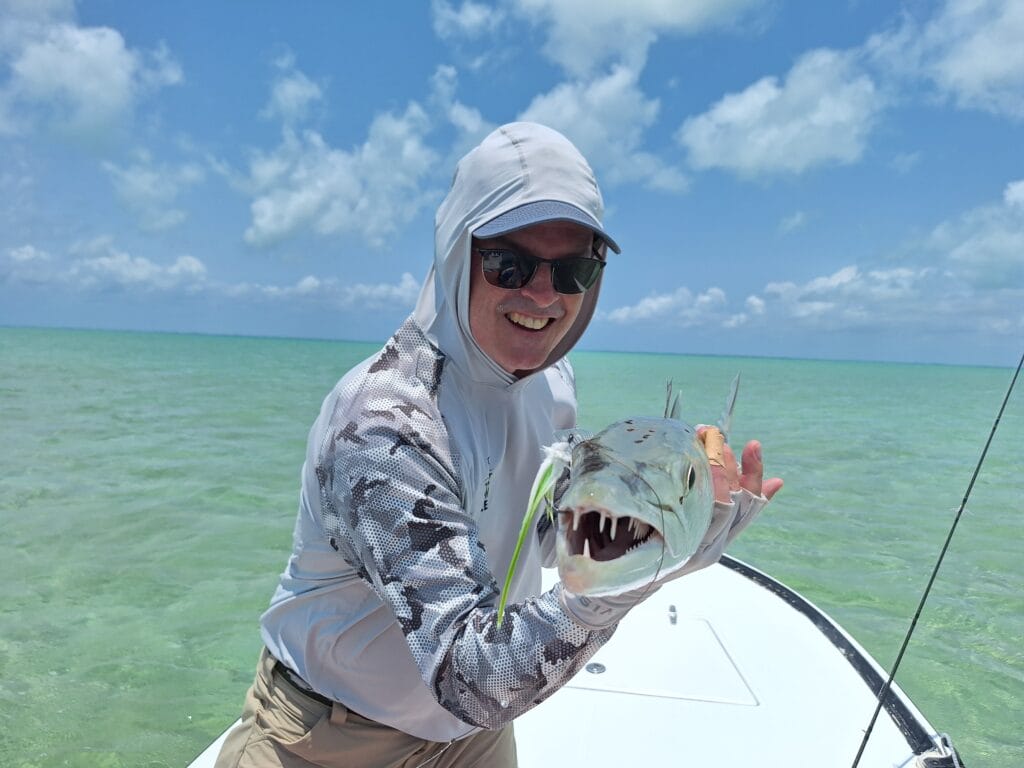
The People You Meet
Tom and I met 20 years ago on a fishing trip to the Bob Marshall Wilderness in Montana. The rest of the group wanted to ride horses the 15 miles to camp. Tom and I hiked in. I soon learned that Tom lived in the same New Jersey town I grew up, and we are essentially the same age. Tom joined the TU board, and when I became president and CEO of TU, he hosted a party for me at his home in New Jersey.
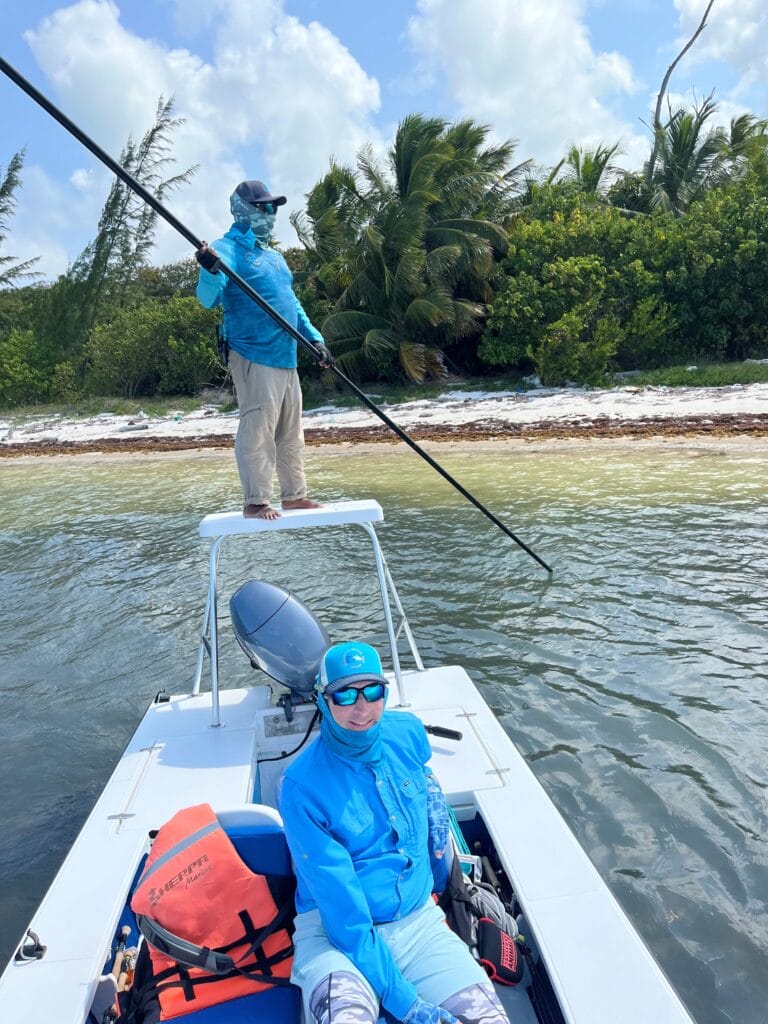
I have one of the greatest jobs in America. I am privileged to work with some of the finest conservationists in the world—people who accomplish amazing things, such as recovering coho on the North Coast of California, taking out dams on the Klamath, or restoring more than 125 miles of rivers and streams in the Driftless Area of Wisconsin, Minnesota, Illinois and Iowa. I am also grateful that it has allowed me to meet wonderful people such as Tom. What is so cool about my friendship with Tom is how common it is. Fishing makes great friendships happen. Like shooting free throws, we all get better every time we fish. The joy is not in out-fishing someone, but in sharing stories of the day by a fire, or over a beer, or in this case, looking out over the Caribbean dreaming about bonefish, tarpon and the permit that got away



